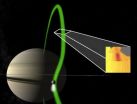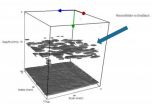(Press-News.org) In the future, when you walk into a doctor's surgery or hospital, you could be asked not just about your allergies and blood group, but also about your gut type. Scientists at the European Molecular Biology Laboratory (EMBL) in Heidelberg, Germany, and collaborators in the international MetaHIT consortium, have found that humans have 3 different gut types. The study, published today in Nature, also uncovers microbial genetic markers that are related to traits like age, gender and body-mass index. These bacterial genes could one day be used to help diagnose and predict outcomes for diseases like colo-rectal cancer, while information about a person's gut type could help inform treatment.
We all have bacteria in our gut that help digest food, break down toxins, produce some vitamins and essential amino acids, and form a barrier against invaders. But the composition of that microbial community – the relative numbers of different kinds of bacteria – varies from person to person.
"We found that the combination of microbes in the human intestine isn't random," says Peer Bork, who led the study at EMBL: "our gut flora can settle into three different types of community – three different ecosystems, if you like."
Bork and colleagues first used stool samples to analyse the gut bacteria of 39 individuals from three different continents (Europe, Asia and America), and later extended the study to an extra 85 people from Denmark and 154 from America. They found that all these cases could be divided into three groups, based on which species of bacteria occurred in high numbers in their gut: each person could be said to have one of three gut types, or enterotypes.
The scientists don't yet know why people have these different gut types, but speculate that they could be related to differences in how their immune systems distinguish between 'friendly' and harmful bacteria, or to different ways of releasing hydrogen waste from cells.
Like blood groups, these gut types are independent of traits like age, gender, nationality and body-mass index. But the scientists did find for example, that the guts of older people appear to have more microbial genes involved in breaking down carbohydrates than those of youngsters, possibly because as we age we become less efficient at processing those nutrients, so in order to survive in the human gut, bacteria have to take up the task.
"The fact that there are bacterial genes associated with traits like age and weight indicates that there may also be markers for traits like obesity or diseases like colo-rectal cancer," Bork says, "which could have implications for diagnosis and prognosis."
If this proves to be the case, when diagnosing or assessing the likelihood of a patient contracting a particular disease, doctors could look for clues not only in the patient's body but also in the bacteria that live in it. And after diagnosis, treatment could be adapted to the patient's gut type to ensure the best results.
INFORMATION:
What's your gut type?
Gut bacteria could help with diagnostics and influence treatments
2011-04-21
ELSE PRESS RELEASES FROM THIS DATE:
International scientists warn of growing threat of wheat rust epidemics worldwide
2011-04-21
ALEPPO, SYRIA (20 April 2011): Researchers meeting at a scientific conference in Aleppo this week reported that aggressive new strains of wheat rust diseases – called stem rust and stripe rust – have decimated up to 40% of farmers' wheat fields in recent harvests. Areas affected are North Africa, the Middle East, Central Asia and the Caucuses, including Syria, Egypt, Yemen, Turkey, Iran, Uzbekistan, Morocco, Ethiopia, and Kenya.
“These epidemics increase the price of food and pose a real threat to rural livelihoods and regional food security,” said Mahmoud Solh, Director ...
Contemporary climate change alters the pace and drivers of extinction
2011-04-21
Local extinction rates of American pikas have increased nearly five-fold in the last 10 years, and the rate at which the climate-sensitive species is moving up mountain slopes has increased 11-fold, since the 20th century, according to a study soon to be published in Global Change Biology. The research strongly suggests that the American pika's distribution throughout the Great Basin is changing at an increasingly rapid rate. The pika (Ochotona princeps), a small, hamster-looking animal sensitive to climate, occurs commonly in rocky talus slopes and lava flows throughout ...
Beams of electrons link Saturn with its moon Enceladus
2011-04-21
Data from NASA's Cassini spacecraft have revealed that Enceladus, one of Saturn's diminutive moons, is linked to Saturn by powerful electrical currents - beams of electrons that flow back and forth between the planet and moon. The finding is part of a paper published in Nature today.
CAPS, one of the instruments on board Cassini which made the electron beam discovery, includes a electron sensor called CAPS-ELS – led by UCL (University College London).
Since Cassini's arrival at Saturn in 2004 it has passed 500km-wide Enceladus 14 times, gradually discovering more of ...
Avoiding Home Loan Modification Scams
2011-04-21
The nationwide economic recession has cost tens of thousands their jobs, forced millions into foreclosure and resulted in countless bankruptcy filings. Despite their best efforts, many people are falling behind on mortgage payments due to financial circumstances beyond their control. In an effort to avoid foreclosure, more and more people are seeking loan modifications as a way to lower payments temporarily (or permanently), making them more affordable and making keeping the home a real possibility.
Unfortunately, at a time when foreclosures are at a record high, unscrupulous ...
Molecule Nutlin-3a activates a signal inducing cell death and senescence in primary brain tumors
2011-04-21
Researchers of Apoptosis and Cancer Group of the Bellvitge Biomedical Research Institute (IDIBELL) have found that a small molecule, Nutlin-3a, an antagonist of MDM2 protein, stimulates the signalling pathway of another protein, p53. By this way, it induces cell death and senescence (loss of proliferative capacity) in brain cancer, a fact that slows its growth. These results open the door for MDM2 agonists as new treatments for glioblastomas. The study has been published at the journal PLoS ONE.
Glioblastoma multiforme is the most common brain tumour in adults and the ...
How molecules get to the right place at the right time
2011-04-21
In a multicellular organism, different cells fulfill a range of diversified functions. Often such specialization depends on the delivery of molecular goods to distinct places within a cell. It ensures that particular functions only occur at defined cellular sites. This establishment of intracellular asymmetry in the otherwise fluid environment of the cell cytoplasm requires active transport processes. Messenger RNAs (mRNA) represent an especially important type of freight. They are copies of genetic information stored in the nucleus. In the cytoplasm the information encoded ...
Lightning-fast materials testing using ultrasound
2011-04-21
Expectant mothers are familiar with the procedure: the physician examines them with an ultrasound apparatus that displays lifelike images of the fetus on the monitor. The application of this technology has been customary in medicine for years; in materials testing though, it has been used only in relatively rudimentary form to date. Researchers at the Fraunhofer Institute for Non-Destructive Testing IZFP in Saarbrücken have adapted the conventional sonar procedure – a simple ultrasound method – and have succeeded in generating three-dimensional images with the aid of innovative ...
Nassau County Crime Lab Shut Down
2011-04-21
Prosecutors trust that the information they receive from crime labs is correct and accurate. The results from tests run at the lab are used to help build cases against those accused of crimes. When this information is inaccurate it can lead to questions for both past and future cases, and in some instances, lead to innocent people being convicted of crimes they did not commit. The Nassau County crime lab recently became the only police lab in the nation to completely close its doors due to its inability to follow procedures.
The lab's troubles started in December 2010. ...
How can we measure infants' pain after an operation?
2011-04-21
It turns out to be difficult to find out exactly how much a child who cannot yet speak suffers after a surgical operation. Researchers at the University Hospital of La Paz, in Madrid, have validated the 'Llanto' scale, the first, and only, tool in Spanish which measures infant pain rapidly and simply.
"The lack of appropriate tools prevents health professionals from knowing if a pre-verbal child who cannot tell us how much a surgical wound hurts, is being treated correctly", explains Francisco Reinoso, lead author of the study and head of the section of Paediatric Anaesthesia ...
Shades of gray: LSU researcher studies South Louisiana's historical ties to the oil industry
2011-04-21
BATON ROUGE – On the one year anniversary of the Deepwater Horizon oil spill that took the lives of 11 men and devastated the livelihoods of many residents of coastal Louisiana, it's difficult to put the complicated relationship between people and oil into perspective. While the environmental impacts have thus far not been as pervasive as originally feared, most scientists are in agreement that it is still simply too early to tell. However, dependence upon oil has not lessened over the past year, laying the groundwork for some very significant debates between environmentalists ...
LAST 30 PRESS RELEASES:
Numbers in our sights affect how we perceive space
SIMJ announces global collaborative book project in commemoration of its 75th anniversary
Air pollution exposure and birth weight
Obstructive sleep apnea risk and mental health conditions among older adults
How talking slows eye movements behind the wheel
The Ceramic Society of Japan’s Oxoate Ceramics Research Association launches new international book project
Heart-brain connection: international study reveals the role of the vagus nerve in keeping the heart young
Researchers identify Rb1 as a predictive biomarker for a new therapeutic strategy in some breast cancers
Survey reveals ethical gaps slowing AI adoption in pediatric surgery
Stimulant ADHD medications work differently than thought
AI overestimates how smart people are, according to HSE economists
HSE researchers create genome-wide map of quadruplexes
Scientists boost cell "powerhouses" to burn more calories
Automatic label checking: The missing step in making reliable medical AI
Low daily alcohol intake linked to 50% heightened mouth cancer risk in India
American Meteorological Society announces Rick Spinrad as 2026 President-Elect
Biomass-based carbon capture spotlighted in newly released global climate webinar recording
Illuminating invisible nano pollutants: advanced bioimaging tracks the full journey of emerging nanoscale contaminants in living systems
How does age affect recovery from spinal cord injury?
Novel AI tool offers prognosis for patients with head and neck cancer
Fathers’ microplastic exposure tied to their children’s metabolic problems
Research validates laboratory model for studying high-grade serous ovarian cancer
SIR 2026 delivers transformative breakthroughs in minimally invasive medicine to improve patient care
Stem Cell Reports most downloaded papers of 2025 highlight the breadth and impact of stem cell research
Oxford-led study estimates NHS spends around 3% of its primary and secondary care budget on the health impacts of heat and cold in England
A researcher’s long quest leads to a smart composite breakthrough
Urban wild bees act as “microbial sensors” of city health.
New study finds where you live affects recovery after a hip fracture
Forecasting the impact of fully automated vehicle adoption on US road traffic injuries
Alcohol-related hospitalizations from 2016 to 2022
[Press-News.org] What's your gut type?Gut bacteria could help with diagnostics and influence treatments



